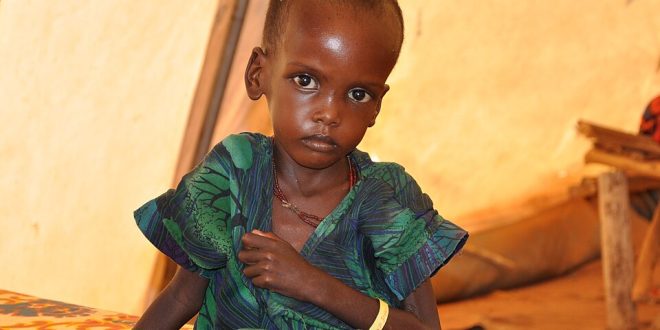Women’s organizations are stepping up as key players in the fight against child malnutrition, and it’s about time we recognize their vital contributions. They’re not just on the sidelines; they’re actively involved in creating healthier futures for children. With their deep roots in communities and a knack for building trust, these organizations are uniquely positioned to make a real difference. Let’s dive into how they’re doing it, shall we?
The Crucial Role of Women’s Organizations
Building Trust and Reaching Vulnerable Populations
Women’s organizations often have an easier time connecting with families, especially in communities where trust in larger institutions may be low. I mean, think about it: who are you more likely to open up to? Someone from a far-off government office, or a neighbor who genuinely cares? These organizations understand local dynamics, cultural nuances, and the specific challenges that families face. They’re not just delivering services; they’re building relationships, one conversation at a time. It’s this trust that allows them to reach the most vulnerable populations effectively.
Empowering Women as Agents of Change
Here’s a thought: who better to promote child nutrition than empowered women? These organizations often focus on empowering women within their communities, providing them with the knowledge and resources they need to make informed decisions about their children’s health. When women are educated and supported, they become powerful agents of change. They’re more likely to adopt better feeding practices, seek medical care, and advocate for their children’s needs. It’s a ripple effect, really, and it starts with empowering the women at the heart of these communities.
Key Activities and Interventions
Nutrition Education and Counseling
One of the most effective tools in the fight against malnutrition is education. Women’s organizations excel at providing nutrition education and counseling to mothers and caregivers. They explain the importance of breastfeeding, balanced diets, and proper hygiene in ways that are easy to understand and implement. I remember reading a story about one organization using local songs and dances to teach about healthy eating – talk about creative! This kind of culturally sensitive approach is what makes their efforts so impactful.
Supplementary Feeding Programs
In areas where food insecurity is a major issue, supplementary feeding programs can be a lifeline for malnourished children. Women’s organizations often run these programs, providing nutritious meals and snacks to children who might otherwise go hungry. These programs aren’t just about filling empty bellies; they’re about providing the essential nutrients that children need to grow and thrive. Sometimes, it’s just that simple, isn’t it? Direct action, making a tangible difference.
Advocacy and Awareness Campaigns
Beyond direct interventions, women’s organizations play a crucial role in advocacy and awareness campaigns. They raise awareness about the importance of child nutrition, challenge harmful cultural practices, and advocate for policies that support families and children. They’re the voice for the voiceless, pushing for change at the local and national levels. It’s not always easy, of course, but their persistence is what drives progress. What could be more vital than that?
Challenges and Opportunities
Funding Constraints and Resource Mobilization
Let’s be real: funding is always a challenge. Women’s organizations often struggle to secure the resources they need to carry out their work effectively. They’re constantly juggling limited budgets and seeking innovative ways to mobilize resources. But it’s not just about money; it’s about building partnerships, leveraging local resources, and finding creative solutions to overcome financial constraints. It’s a constant hustle, but they make it work.
Strengthening Capacity and Coordination
To maximize their impact, women’s organizations need to continuously strengthen their capacity and improve coordination. This means investing in training, developing effective monitoring and evaluation systems, and fostering collaboration among different organizations. It’s about working smarter, not just harder. After all, isn’t that what we all strive for? Better coordination ensures that efforts are not duplicated and that resources are used efficiently.
Leveraging Technology and Innovation
In today’s digital age, technology offers incredible opportunities to improve child nutrition. Women’s organizations can leverage technology to deliver nutrition education, monitor child growth, and connect with families in remote areas. Think mobile apps, online platforms, and even simple text messages. It’s about using technology to extend their reach and enhance the effectiveness of their interventions. Why not use all the tools at our disposal, right?
Government Collaboration and Support
Policy Alignment and Implementation
For women’s organizations to truly thrive, they need the support of the government. This means aligning policies with their goals, ensuring that their voices are heard in policy-making processes, and creating an enabling environment for their work. It’s about recognizing their expertise and involving them in the design and implementation of nutrition programs. After all, they’re the ones on the ground, seeing what works and what doesn’t.
Resource Allocation and Partnership Frameworks
Governments need to allocate adequate resources to support women’s organizations and establish clear partnership frameworks. This includes providing funding, technical assistance, and training opportunities. It’s about recognizing them as valuable partners in achieving national nutrition goals and investing in their capacity to deliver results. Seems like a no-brainer, doesn’t it?
Monitoring and Evaluation
Effective monitoring and evaluation systems are essential to track progress and ensure accountability. Governments and women’s organizations need to work together to develop these systems and use data to inform decision-making. It’s about learning from successes and failures, and continuously improving programs to achieve the greatest impact. Data-driven decisions are the way forward, wouldn’t you agree?
So, women’s organizations are doing some seriously important work in the world of child nutrition, and it’s clear that supporting them is key to reaching our goals. From building trust to empowering women, they’re making a real difference on the ground. It’s a collaborative effort, and the more we recognize and support these organizations, the healthier our children will be. Maybe it’s time to get involved, or at least spread the word!
 Beverage Zone
Beverage Zone




